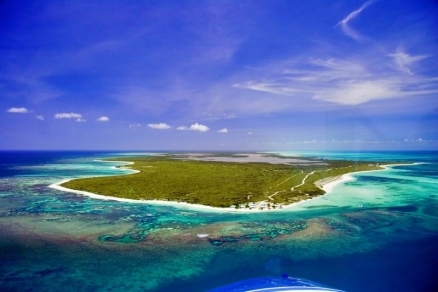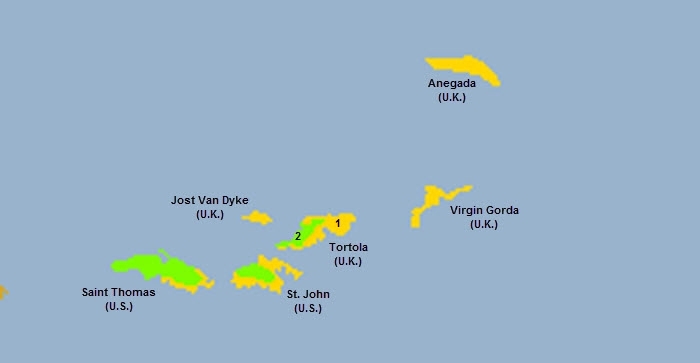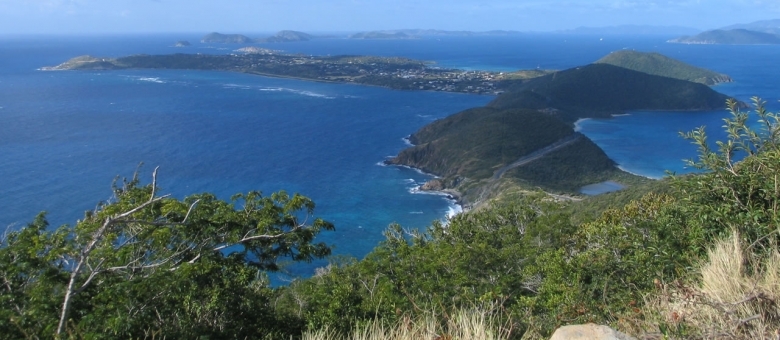Ecoregions of British Virgin Islands
Ecoregions of Countries Collection 
Most of the British Virgin Islands are within the Leeward Islands xeric scrub ecoregion [1]. The north western part of Tortola and Jost van Dyke along with nearby islands are within theLeeward Islands moist forests ecoregion [2]
Contents
Leeward Islands xeric scrub
This ecoregion covers much of the land area on most of the Caribbean’s Leeward Islands. This ecoregion is characterized by low elevation, little rainfall and an arid climate. It is found either as a coastal band or in the case of islands such as Anguilla and Antigua, it encompasses nearly the entire island. More specifically, it covers most of Grande Terre and Marie-Galante of Guadeloupe, Antigua, Anguilla, St. Martin, St. Barthelemy, Saba, and the eastern portions of the US Virgin Islands and British Virgin Islands.
On islands such as the US and British Virgin Islands, large portions are encompassed by this xeric ecoregion.
Leeward Islands moist forests
This ecoregion is found in various proportions on the Caribbean’s Leeward Islands and is characterized by rugged, volcanic mountains covered in moist tropical forest. Specifically, this ecoregion covers approximately 85% of Basse Terre of Guadeloupe, the central, mountainous portions of Montserrat, St. Kitts and Nevis, small southern portions of Antigua, and western portions of the U.S. and British Virgin Islands.
Parks
Terrestrial parks in the British Virgin Islands (BVI) cover 2.1% of the land area. The BVI park system plan sought to define a system of parks and protected areas that would incorporate the existing parks into a larger system of comprehensive ecological units in order to preserve the most important areas of natural and cultural heritage. Twelve additional parks were proposed, but none of these has yet been declared. This is partly due to the approach adopted in the BVI of preparing management plans and strengthening institutions in advance of park declaration.
See also:
- Common coral reef fishes of the British Virgin Islands
- Common coral reef fishes of Virgin Gorda
- Biological diversity in the Caribbean Islands
- Protected areas of British Virgin Islands
Context
Ecoregions are areas that:
[1] share a large majority of their species and ecological dynamics;
[2] share similar environmental conditions; and,
[3] interact ecologically in ways that are critical for their long-term persistence.
Scientists at the World Wildlife Fund (WWF), have established a classification system that divides the world in 867 terrestrial ecoregions, 426 freshwater ecoregions and 229 marine ecoregions that reflect the distribution of a broad range of fauna and flora across the entire planet.


